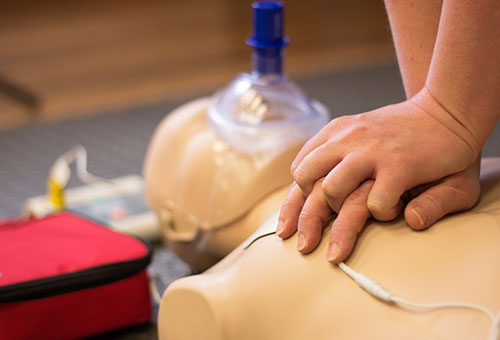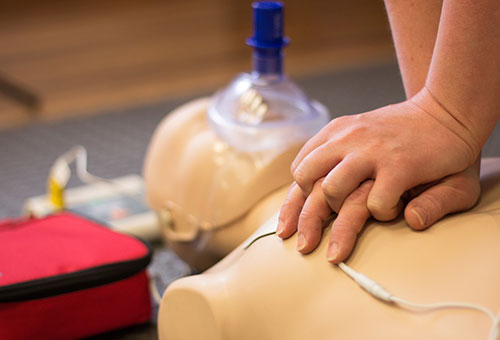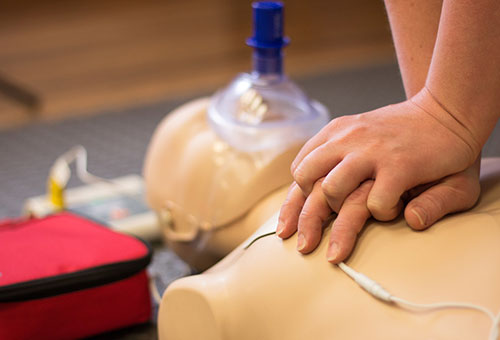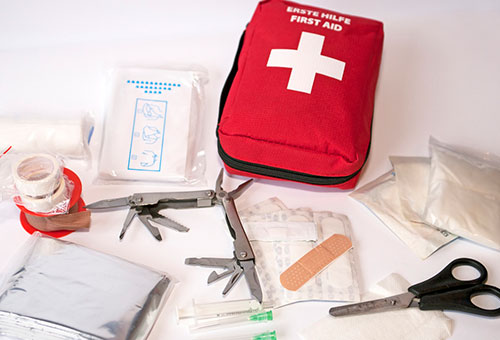Spring registration is now open. Online and in-person classes are available. Sign up for classes today!CLASSES
Take a class at Fox Valley Tech for fun, personal enrichment or career development. Find classes in any location during any time of the day. We have hundreds of classes to fit your budget, schedule and learning style.
CATEGORIES
Sorry, no results were found. Please check back later.
Focuses on the instructional techniques, communication skills, analysis of psychomotor skills, evaluative techniques, skill demonstration and knowledge needed to be an American Heart Association BLS CPR instructor. Student must have current AHA BLS Provider CPR certification. Students are mailed an AHA BLS Instructor card with two-year certification after being successfully monitored teaching an AHA BLS Provider CPR course.
Teaches and evaluates two-rescuer CPR, one-rescuer CPR, obstructed airway technique for the adult/child/infant, adult/child Automated External Defibrillator (AED), pocket mask and Bag Valve mask. Students receive an American Heart Association Healthcare CPR card with two-year certification.
Teaches CPR/AED for adult/child/infant, rescue breathing for adult/child/infant, relief of choking for adult/child/infant. Upon completion, students are emailed an American Heart Association CPR e-Card with two-year certification.
Introduces basic anatomy and physiology of the human body. Students explore the basics of cells and cell chemistry and build on that knowledge to develop an understanding of tissues, organs, and organ systems. Students explore each body system and how systems function under normal (homeostatic) body conditions. Students develop an overall understanding of how the human body operates on a minute to minute, day to day, basis when all systems are functioning properly.
Teaches and evaluates CPR/AED for adult, rescue breathing for adult, and relief of choking for adult and basic first aid until an ambulance arrives. Students are emailed an American Heart Association Heartsaver CPR/First Aid e-Card with two-year certification.
The focus of this course is the use of technology in healthcare. Learners use common business software applications, including word processing, presentation, spreadsheet, and databases. Communication methods using technology are addressed. Learners gain experience with using the electronic health record (EHR). Healthcare EHR security issues, social media use, and digital healthcare resources are examined.
Teaches and evaluates the knowledge/skills needed to respond to medical or trauma situations. It includes AED, Combitube, EpiPen, Spinal Immobilization, CPR and skills needed to assist the ambulance crew. This course meets Wisconsin and National licensure guidelines. Students receive an AHA Healthcare CPR card and FVTC Emergency Medical Responder certificate.
Teaches and evaluates the licensed EMT's knowledge and advanced skills including IV therapy, subq. injections and pharmacology. This course meets Advanced EMT licensure requirements. Students must have current Wisconsin EMT-Basic License, updated immunizations, current AHA BLS CPR and criminal background checks. Department consent is required.
Presents and evaluates basic first aid skills necessary to care for the ill and injured until medical help arrives. The course is designed for the layperson. Students receive an American Heart Association First Aid card with two-year certification.
Focuses on the component parts of medical terms: prefixes, suffixes and word roots. Students practice formation, analysis and reconstruction of terms. Emphasis on spelling, definition and pronunciation. Introduction to operative, diagnostic, therapeutic and symptomatic terminology of all body systems, as well as systemic and surgical terminology.












